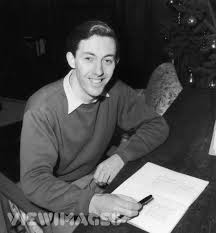 Powell Janulus can speak 42 different languages, and was a certified court translator for 28 of those. In his thirties, he became a court translator and got paid for each language he could translate. He was entered into the Guinness World Records in 1985 for fluency in 42 languages. He had to pass a two-hour conversational fluency test with a native speaker of each of the 42 different languages he spoke at that time. It is reported that Powell speaks the following 42 languages: French, Spanish, Portuguese, Italian, Romanian, German, Dutch, Frisian, Norwegian, Danish, Swedish, Icelandic, Russian, Ukrainian, Polish, Czech, Serbian, Slovak, Slovene, Kashubian, Lusatian, Wendish, Belarusian, Macedonian, Bulgarian, Hindi, Punjabi, Urdu, Armenian, Sinhalese, Tibetan, Japanese, Mandarin, Cantonese, Croatian, Greek, Turkish, Kurdish, Finnish, Korean and Persian. In his forties he expanded his repertoire to include less common languages such as Tibetan, Romani (Gypsy), Inuit (Eskimo) and Swahili.
Powell Janulus can speak 42 different languages, and was a certified court translator for 28 of those. In his thirties, he became a court translator and got paid for each language he could translate. He was entered into the Guinness World Records in 1985 for fluency in 42 languages. He had to pass a two-hour conversational fluency test with a native speaker of each of the 42 different languages he spoke at that time. It is reported that Powell speaks the following 42 languages: French, Spanish, Portuguese, Italian, Romanian, German, Dutch, Frisian, Norwegian, Danish, Swedish, Icelandic, Russian, Ukrainian, Polish, Czech, Serbian, Slovak, Slovene, Kashubian, Lusatian, Wendish, Belarusian, Macedonian, Bulgarian, Hindi, Punjabi, Urdu, Armenian, Sinhalese, Tibetan, Japanese, Mandarin, Cantonese, Croatian, Greek, Turkish, Kurdish, Finnish, Korean and Persian. In his forties he expanded his repertoire to include less common languages such as Tibetan, Romani (Gypsy), Inuit (Eskimo) and Swahili. 
 Kató Lomb was a Hungarian interpreter, translator and one of the first simultaneous interpreters in the world. She was able to interpret fluently in nine or ten languages and she earned money with sixteen languages (Bulgarian, Chinese, Danish, English, French, German, Hebrew, Italian, Japanese, Latin, Polish, Romanian, Russian, Slovak, Spanish, Ukrainian). She learned these languages mostly by teaching herself. She is the author of the books: How I Learn Languages and Harmony of Babel and With Languages in Mind: Musings of a Polyglot
Kató Lomb was a Hungarian interpreter, translator and one of the first simultaneous interpreters in the world. She was able to interpret fluently in nine or ten languages and she earned money with sixteen languages (Bulgarian, Chinese, Danish, English, French, German, Hebrew, Italian, Japanese, Latin, Polish, Romanian, Russian, Slovak, Spanish, Ukrainian). She learned these languages mostly by teaching herself. She is the author of the books: How I Learn Languages and Harmony of Babel and With Languages in Mind: Musings of a Polyglot 
Harold Williams was a journalist and linguist who spoke more than 58 languages, including English, Zulu, Latin, Ancient Greek, Hebrew, French, German, Spanish, Italian, Maori, Samoan, Tongan, Fijian, Russian, Polish, Niue, Swahili, Dobuan, Hausa, Mandarin Chinese, Japanese, Old Irish, Tagalog, Hungarian, Czech, Coptic, Egyptian, Hittite, Albanian, Basque, Chinese and others.
Kenneth Locke Hale was a linguist at the Massachusetts Institute of Technology who spoke over 50 languages and studied a huge variety of previously unstudied and often endangered languages—especially indigenous languages of North America, Central America and Australia. Languages investigated by Hale include Navajo, O'odham, Warlpiri, and Ulwa, among many others.
Newspaper article: Speaking over 50 languages, Professor Hale was 'truly a voice for the voiceless,'
Michael Ventris deciphered Linear B, showing it to be early Greek and was an impressive linguist, though an architect by profession. He knew a wide range of European languages (during wartime training in Canada, he commented on hearing Polish and Ukrainian being spoken in the streets of Canadian cities) and before his death in a car crash in 1956, he was able to talk to Linear B symposium participants in their own languages.
Add your favorite polyglot in the comment section below. Please include full name, brief bio and link if possible.






















